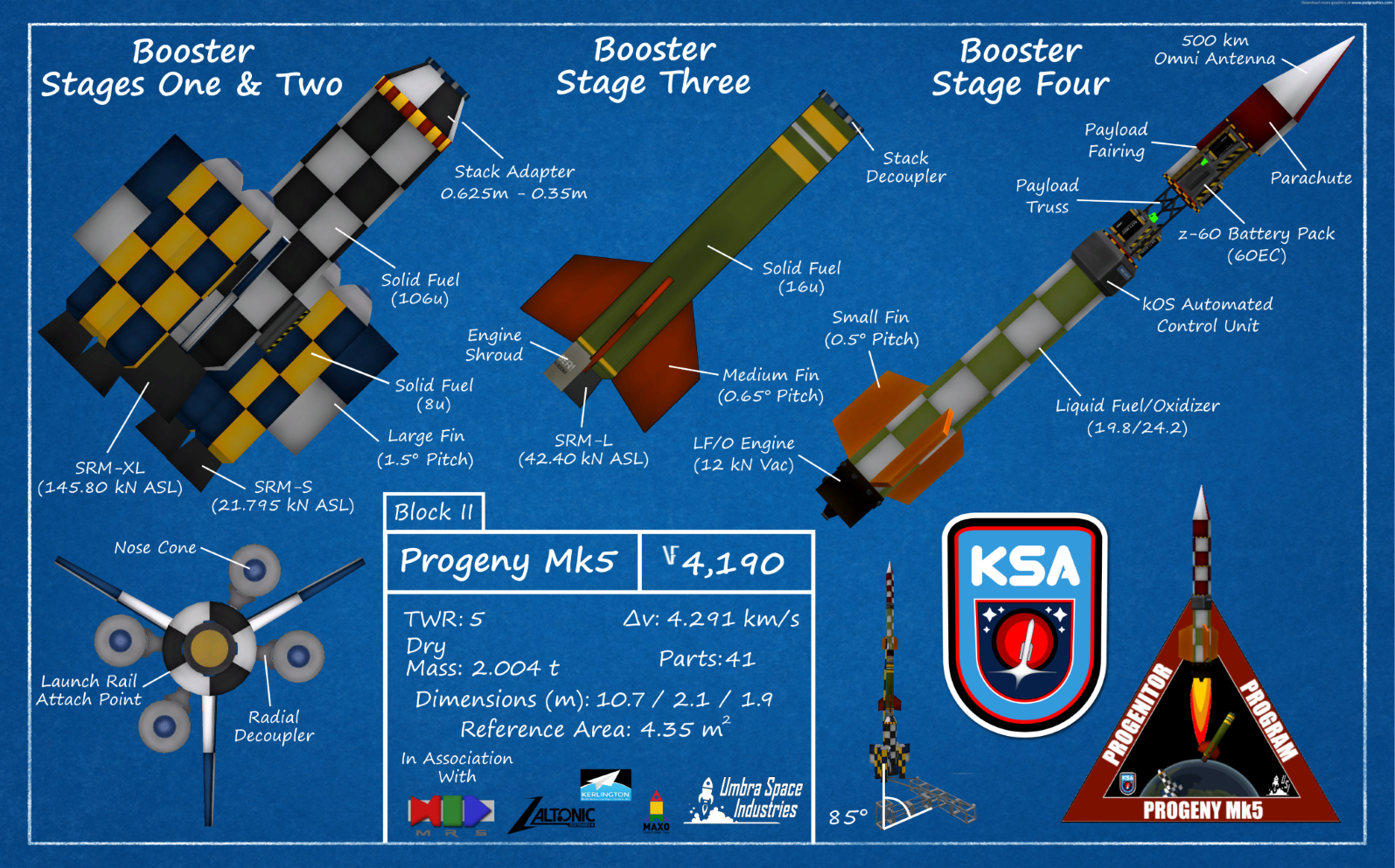 Although the second flight of the Mk5 Block I was an incredible success, reaching nearly 500km up into space (more than twice what we hoped for), it has also brought to light numerous issues that will need to be resolved. We consider ourselves to be extremely lucky in being able to recover this rocket & until we feel confident we can do it again we won’t be launching any more. This also extends to the more-powerful Block II variant, which is directly dependent on the success of the Block I. In addition to any technical and engineering issues, the very nature of the Mk5 program will need to be rethought now that we have an idea of just how powerful the newer boosters are. We planned for the Block I to service LKO & have trouble pushing payloads beyond 250km. The Block II was therefore the heavy-lift variant that would allow science data to be gathered beyond this distance.
Although the second flight of the Mk5 Block I was an incredible success, reaching nearly 500km up into space (more than twice what we hoped for), it has also brought to light numerous issues that will need to be resolved. We consider ourselves to be extremely lucky in being able to recover this rocket & until we feel confident we can do it again we won’t be launching any more. This also extends to the more-powerful Block II variant, which is directly dependent on the success of the Block I. In addition to any technical and engineering issues, the very nature of the Mk5 program will need to be rethought now that we have an idea of just how powerful the newer boosters are. We planned for the Block I to service LKO & have trouble pushing payloads beyond 250km. The Block II was therefore the heavy-lift variant that would allow science data to be gathered beyond this distance.
Today the recovered third stage was carefully dismantled, large sections were fused together due to the heat from re-entry, but the data onboard was accessed and confirmed mostly intact, which still marks this as a successful flight. These next few days will be spent analyzing the telemetry and science data to aid in determining what our next steps will be. As the launch video released earlier shows, there were some problems during ascent that will need to be addressed.
Until we release our full report on the flight, the next Block I launch that was scheduled for 11/7 has been pushed back to no earlier than 11/22, while the Block II launch has been pushed back to no earlier than December. We very much hope to get at least one Block II off before the operational year ends on 12/15!









